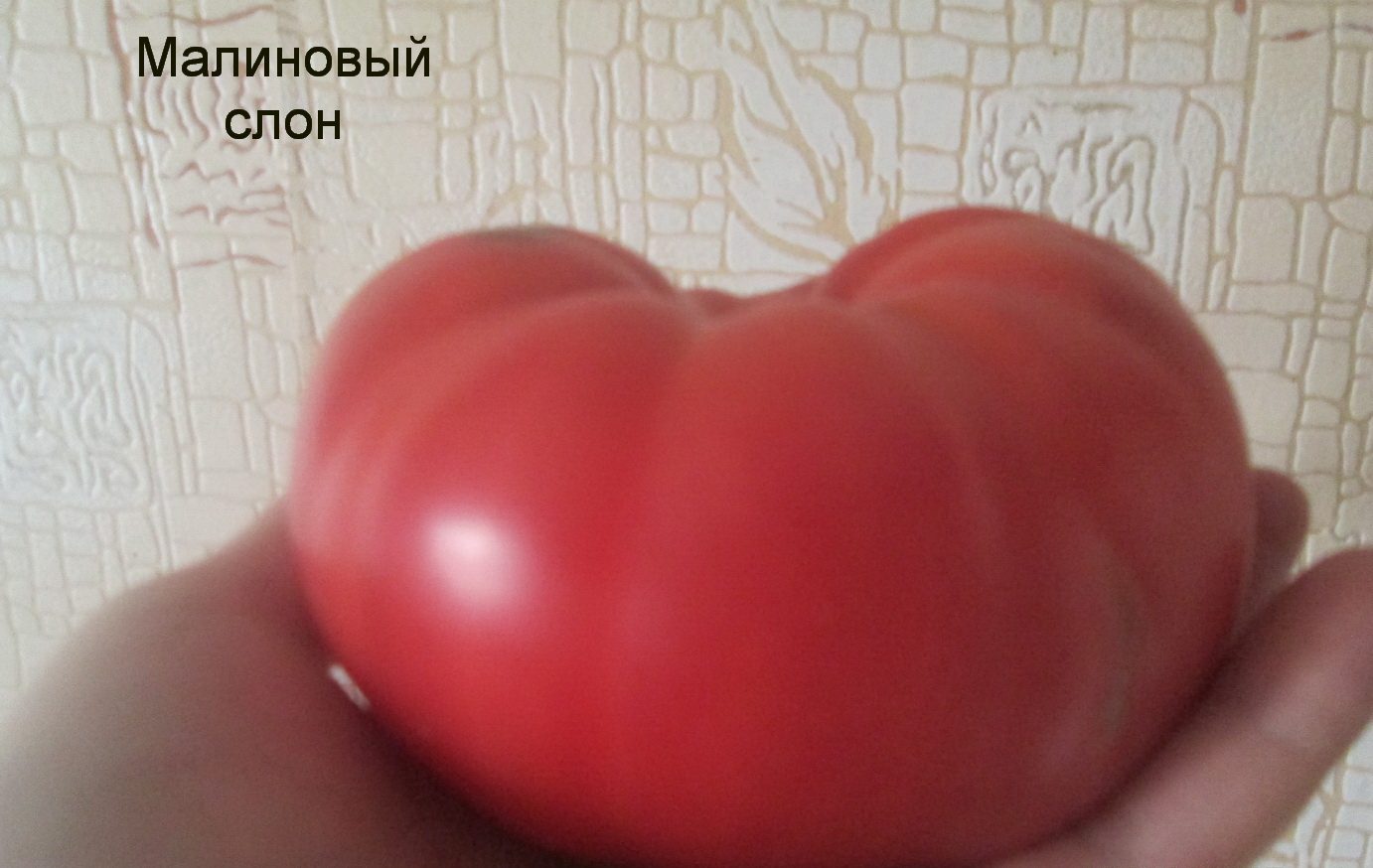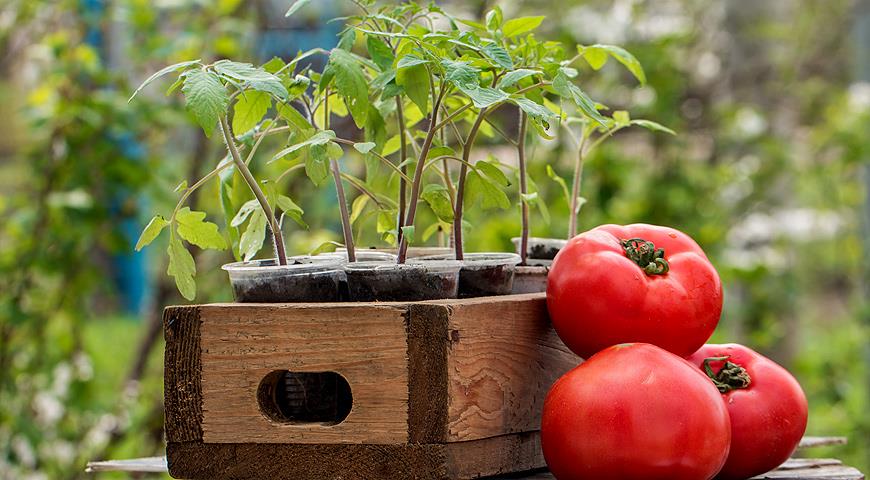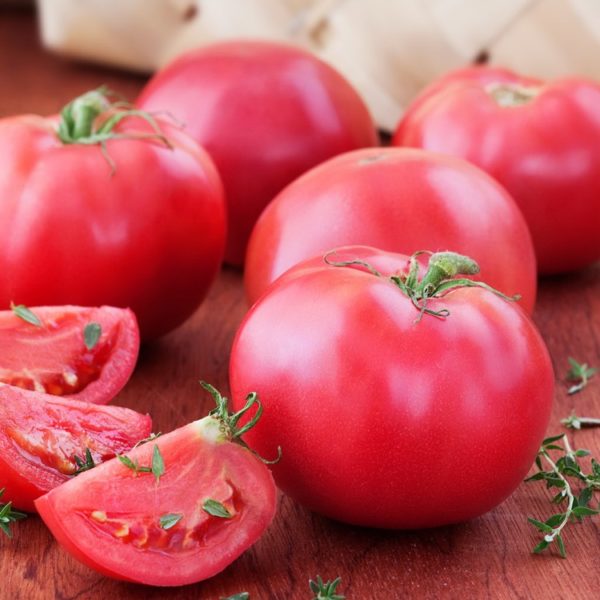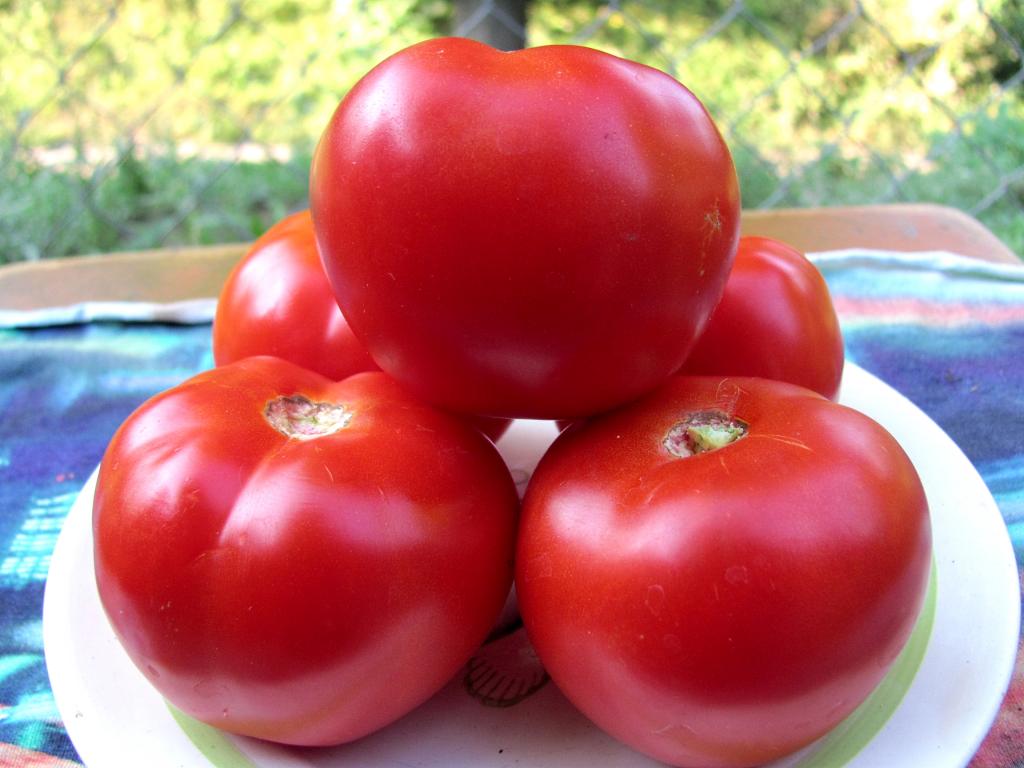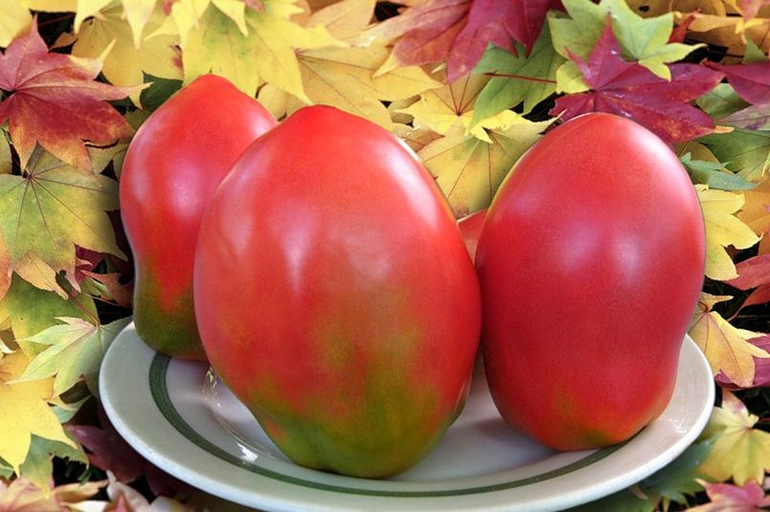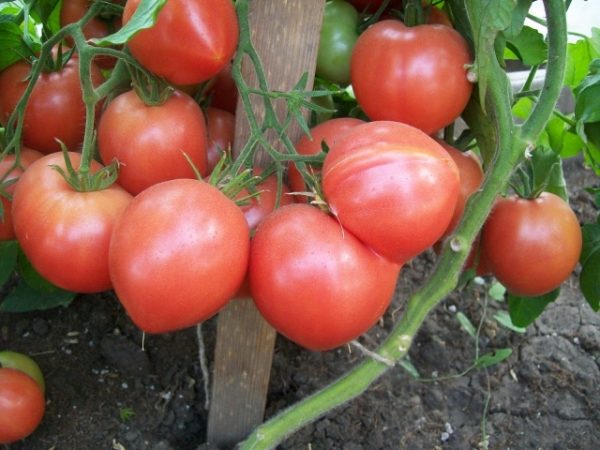Content:
One of the best representatives of pink tomatoes can rightly be called the "Raspberry Elephant" variety. Its conclusion took place at the beginning of the XXI century, thanks to the Russian breeder L. Myazina. Convinced of the good quality of the product, in 2009 scientists decided to enter the variety in the State Register. Very quickly "Raspberry Elephant" became a favorite of many farmers, because it has a particularly good taste and meatiness.
Main characteristics of the variety
Plant parameters
"Raspberry Elephant" is a medium-ripening variety. A lush bush can grow up to 2 meters in height. The plant is distinguished by unlimited growth of shoots, therefore, in order to obtain large and tasty fruits, gardeners are advised to form a bush in one lash.
As a rule, 6, rarely 5, fruits are tied in one brush. The shape of the vegetable is round, but slightly flattened on top. Pink colour. The skin of the fruit, in comparison with the fruits of other varieties, is quite thin and easily detached. The tomato has a sweetish taste and good flesh. The dry matter in vegetables is only 5%. This variety is valuable for its high content of carotene, sugar, lycopene.
Considering the size of the tomato, we can say that it fully justified its name. The fruit usually has 6-8 chambers. The weight of one tomato is from 300 to 700 grams. If a gardener wants to grow a huge fruit for an exhibition, he will have to remove several strings on the brush. Thus, a tomato can reach 900 grams.
Frost resistance
Tomato Raspberry Elephant, indicates the characteristics and description of the variety, refers to heat-loving plants. Therefore, only representatives of the southern regions of the country can afford to grow this variety outdoors. There is enough sunlight and slight temperature fluctuations. Tomato sprouts successfully in Krasnodar, Arkhangelsk, Rostov regions, Crimea, Belgorod. The central and northern regions are distinguished by a harsh climate, therefore, in these parts of Russia, it will be possible to obtain good yields only if tomatoes are grown in greenhouse.
Yield
Tomato "Raspberry Elephant" gives off fruits after about 110-120 days from the moment of emergence. The yield of this varietal variety cannot but rejoice - with careful care, you can collect up to 20 kg of fruits from one square meter.
Agricultural technology of cultivation
Soil selection and preparation
The "Raspberry Elephant" variety can be planted both in greenhouses and in open ground. For the first case, you can use store-bought and mineral-rich soil. You can also prepare the soil in advance in the fall. It is better to take soil from equal parts of the garden. The earth must be mixed with humus and sand or ash must be added to it. You can keep such material in bags or special containers (buckets, boxes).
In the second case, a well-heated and light sandy loam soil type will be the best option for this variety. The plant loves soils with a pH of 6-6.5. To achieve such indicators, even in the fall, you need to generously fertilize the land with humus or manure.
Regardless of where exactly the tomato will be planted, 10 days before the planting date, you need to generously pour the base with warm water and cover with foil. Before planting, the soil is loosened, rows are made and watered so that the seeds or seedlings take root well. Some owners recommend sprinkling the ground with a solution of potassium permanganate or copper sulfate to protect the plant from possible diseases.
If it is possible to choose one or another section of the garden for planting tomatoes, then it is better to give preference to the one where they were previously grown:
- cucumbers;
- bow;
- zucchini.
Landing features
Sowing seeds for seedlings should be at the end of March. Some agricultural technicians suggest using seeds from two years ago, because these have a better chance of germinating successfully. Before sowing, the planting material must be soaked for at least 12 hours in a growth stimulator.
The seeds must be placed in plastic containers. They can be purchased at flower shops or made yourself from plastic buckets or cups. The bottom of the container should have holes to prevent water from collecting.
The container is filled with earth. One container holds 1 seed. The optimum immersion depth is 2 cm. The planting material is covered with earth and watered. From above you need to cover the container with a lid or film to ensure a greenhouse effect. Containers with seedlings should be kept in a sunny and warm place. If everything is done correctly, then in 5-6 days the owner will be able to see his sprouted tomato.
For the normal development of seedlings of this variety, it is important to provide it with enough light. Artificial lighting should also occur in the evening. Lamps (you can economical type) are placed at a height of 8-15 cm from the plant itself. If electricity is already in use, then it is worth making its use as efficient as possible and making the supply of light even from all sides.
While the plant is growing up, it needs to be ventilated from time to time, watered with clean water. To prepare seedlings for further planting in the ground, gardeners also have to harden them. To do this, the container with the plant is taken out into the street every day for several weeks. Each time the tomato stays on the street increases. You can start with 2-3 hours a day.
For 1 sq. m. it is allowed to plant no more than 4 plants. The best planting scheme is 60 by 40 cm. Otherwise, the tomato bushes will interfere with each other very much, and the fruits themselves will not reach their maximum size.
Having filled up the lower part, it is worth immediately tearing the lower leaves from the trunk. The plant is watered generously, the ground is lightly tamped.
How to care for a plant
"Raspberry Elephant" is a variety that requires plenty of drinking. Its fruits will grow large if the owner is not lazy to add it.
In addition, it is imperative to feed the plant. This is best done with organic substances. Manure is an excellent option. It must be diluted in the proportion: 1 bucket (10-12 liters) per 100 liters of water. You need to feed tomato bushes at least twice a month. In this case, 2-3 liters of solution are consumed per bush. Particular attention should be paid to the plant at a time when the fruits themselves are being formed. At the same time, excessive moisture in the tomato is also not recommended, because it can cause a disease such as late blight.
Caring owners also perform mulching. It is useful to sprinkle the plant with peat, rotted sawdust or humus. The optimal layer thickness is 5-6 cm. Such a procedure will help protect the plant from overheating, and will also help to retain moisture in the soil.
Manual weed removal should be done as carefully as possible, so as not to damage or undermine the tomato itself.
The most common disease in this variety is apical rot.It is possible to prevent it or get rid of the disease in the early stages by reducing the nitrogen content in the soil and increasing the amount of calcium. Other treatment options include increasing the amount of water and treating the diseased leaves with a calcium nitrate solution.
You can prevent a disease such as brown spotting by adjusting the temperature regime. At the first signs of illness, the amount of watering should be reduced.
As for pests, most of all "Raspberry Elephant" suffers from thrips and aphids. You can fight them with chemicals. One of the best options for such a case would be Zubr. Colorado beetles eat tomato to a lesser extent. To combat them, gardeners are advised to spray the plant with the proven Prestige remedy or its analogues.
Advantages and disadvantages of the variety
The "Raspberry Elephant" tomato variety has very few drawbacks. Most gardeners and farmers leave positive reviews about it.
The main advantages of the variety are:
- unpretentious care;
- high marks for the taste of the fruit;
- large fruit size;
- rich vitamin composition;
- ripening fruits without direct sunlight;
- resistance to many diseases;
- wonderful presentation;
- friendly set and simultaneous ripening of fruits;
- perfect for preparing a wide variety of dishes and preserves.
Some breeders call a thin skin a minor disadvantage of the fruit. Because of this, the tomato cannot last long after harvest. Another disadvantage of the plant is its low frost resistance, and, consequently, the impossibility of growing outdoors in Central Russia.

